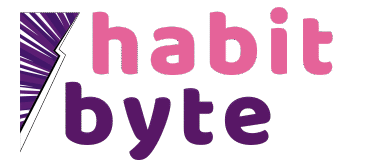What Is Impulsive Behavior? Understanding Self-Control, Habits, and Routines
We’ve all clicked “Buy Now” at midnight, snapped at a loved one, or eaten the extra slice we didn’t plan for. That’s impulsive behavior,fast actions driven by immediate urges rather than long-term goals. It matters because those quick choices compound into financial stress, health setbacks, and strained relationships. Psychologists call our tendency to overvalue “right now” and undervalue “later” delay discounting. The upside: self-control isn’t a fixed trait. With smart systems,habits, routines, and environment design,you can make the wiser choice feel easier and more automatic.
Think of impulses like waves: strong but brief. If you can surf the peak,adding a small pause,your thoughtful brain can catch up to your emotional one and steer you back toward what you really want.
Why Self-Control Works (and When It Doesn’t)
Self-control is more than willpower. It draws on executive function (planning, attention, and working memory), emotion regulation, and the structure around you. A helpful analogy: installing “speed bumps” between urge and action. Each bump,a breath, a rule, a friction point,slows you down just enough to choose deliberately.
Willpower falters in high-friction environments: cookies on the counter, one-click purchasing, phone on the pillow. Against constant dopamine cues, willpower alone is like bringing a spoon to a sword fight. Instead, let systems do the heavy lifting. Research backs this: Peter Gollwitzer’s work on implementation intentions (If–Then plans) shows that pre-deciding your response in tempting moments significantly boosts follow-through. Classic self-control studies (e.g., the marshmallow test) and more recent habit science suggest that structure,not sheer grit,is what sustains good choices under stress.
Habits and Routines That Create a Helpful Autopilot
Habits reduce decision fatigue, freeing you from negotiating with every urge. Routines make the desired action the path of least resistance.
- Default decisions: Pick a go-to breakfast or work-start ritual. Save creativity for where it counts.
- Reliable cues: Same time, same trigger: shoes by the door, 7:00 a.m. calendar alert, playlist queued.
- Micro-delays: Use the 10-minute rule: “I can have it, but not for 10 minutes.” Many urges fade if you wait.
- Box breathing: Inhale 4, hold 4, exhale 4, hold 4,repeat 4 times. Calm the body; clear the mind.
- Label the urge: “I’m feeling an urge to scroll because I’m bored.” Naming reduces intensity.
- If–Then scripts (implementation intentions): “If I want to snack after 9 p.m., then I’ll make mint tea and brush my teeth.” “If I’m about to impulse-buy, then I’ll move it to a 24-hour wish list.” Post and rehearse them daily.
- Reward wisely: Try temptation bundling (Katy Milkman): pair a pleasure with a good habit,watch your show only while walking. Track streaks to make progress visible and satisfying.
These tools shift control from momentary mood to reliable process. The goal isn’t to be stricter; it’s to be smarter.
Design Your Environment,and Regulate Emotions
Your surroundings silently shape your choices. Make the good behaviors easy and the risky ones inconvenient.
- Remove friction for good choices: Prep fruit at eye level, keep water on your desk, lay out gym clothes.
- Add friction to risky choices: Delete shopping apps, turn off one-click purchase, log out of social media.
- Precommit: Leave your credit card at home, use site blockers during work hours, set a 48-hour rule for purchases over a set amount.
- Make cues visible: Calendar your routines and post your top three daily priorities.
Because many impulses are emotional shortcuts,shopping to soothe stress, scrolling to escape boredom, snapping to discharge anger,layer in simple regulation skills:
- HALT check: Am I Hungry, Angry, Lonely, or Tired? Meet the real need first.
- Self-validation: “I’m anxious, and that makes sense after a hard day.” Acceptance lowers arousal.
- Move your body: A 5–10 minute walk can reset your nervous system and perspective.
- Self-compassion: Shame fuels impulsivity; kindness fuels change. Talk to yourself like a coach, not a critic.
When your environment and emotions are aligned with your goals, the “tired version of you” still makes wise choices, creating more space to act with intention.
Practical Takeaways: A 10-Day Impulse Control Reset
Days 1–3: Awareness and Setup
- Track three common triggers and when they occur (time, place, feeling).
- Write three If–Then scripts to match those triggers and post them where you’ll see them.
- Make one environment tweak: delete an app, move snacks out of sight, or set a site blocker.
Days 4–6: Micro-Delays and Routines
- Use the 10-minute rule once daily; note how the urge changes.
- Anchor one routine (same wake-up, same first step,water, walk, or journal).
- Practice box breathing during one stressful moment each day.
Days 7–8: Emotion Skills and Rewards
- Run a HALT check before reacting when upset; meet the underlying need.
- Try temptation bundling (podcast + chores, latte + budgeting) to make effort feel rewarding.
- Start a simple streak tracker; aim for “don’t break the chain.”
Days 9–10: Review, Precommit, and Plan Slips
- Identify your two most effective strategies; double down on them.
- Set a precommitment for your biggest temptation (e.g., 48-hour purchase rule).
- Plan your slip response: “If I slip, then I reset at the next decision, not the next day.”
If impulsivity is harming work, relationships, or finances,especially alongside attention, mood, or substance concerns,seek support. Coaching or cognitive-behavioral therapy can help you practice planning, distress tolerance, and impulse control with structure and accountability. Asking for help is a strength, not a shortcoming.
Bottom line: impulsive behavior thrives on urgency, stress, and convenience. Self-control grows when you slow the moment, design supportive environments, and let routines carry you when motivation dips. Add small pauses, use If–Then scripts, reward wise choices, and track tiny wins. Over time, you’ll spend less energy resisting impulses and more time making calm, confident decisions that match the life you’re building.
